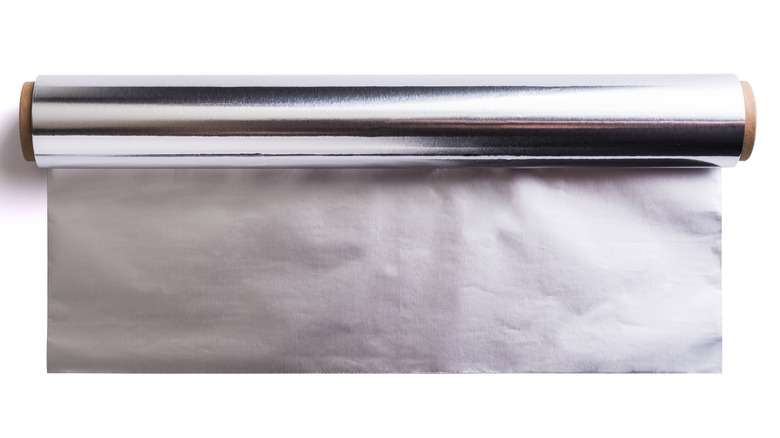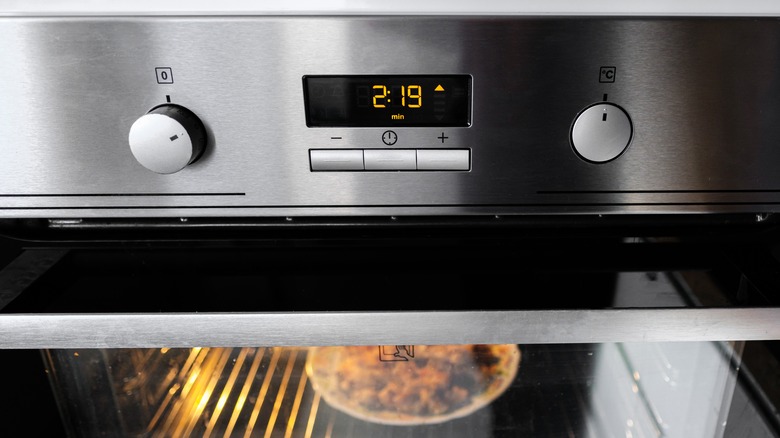The Reason You Shouldn't Add Foil To The Bottom Of Your Oven
Foil is one of the most ingenuous kitchen inventions of all time, encompassing a storage device, a cooking tool, and a brilliant utensil for ad-hoc projects. At the same time, however, foil is not without ills.
AllRecipes shares that Reynolds (one of the biggest foil manufacturers) actually advises against lining an oven bottom with foil in order to "avoid possibly heat damage to your oven." Instead, Reynolds recommends using a foil-covered oven rack on the oven floor in order to catch any errant drips or fat. Reynolds elaborates, noting that "the foil should only be a few inches larger than the baking pan to allow for proper heat circulation." So while foil is not prohibited from being in the oven, it should not be used to line the bottom of the oven.
Appliance company Whirlpool acknowledges that it might be tempting to use foil on the bottom of the oven in hopes of keeping it clean, "but lining an oven with foil increases the intensity of heat on oven surfaces that can lead to surface damage like scratching or chipping on the porcelain finish and damage to heating elements. It can also prevent even cooking." Whirlpool also notes that while foil is "heat resistant ... it isn't completely heat-proof." That distinction is certainly important to know.
Why can't I use foil on the floor of my oven?
CNET weighs in on the question as well — and they agree that foil shouldn't be used as an oven floor liner. Using foil that way causes flame/heat source interference, lack of air flow, and issues with heat reflection affecting the foods or the oven itself. Some ovens can even melt certain foils to the oven floor, which would cause permanent damage and a hefty charge to get it fixed — even a full oven replacement. CNET notes that a cookie sheet on the bottom, covered with foil or not, would be a great option, or merely place your potentially-bubbling food on a cookie sheet, which will catch the errant drips before they even have the chance to touch the oven floor. There are also silicone oven liners nowadays, and most are heat-resistant and non-reflective, according to CNET — but only for electric or convection ovens, not gas.
Kitchn notes a few other foil safety tips. Don't use it when baking cookies, in the microwave, or when cooking acidic foods. Don't feel like we're foil shaming, however — foil should be safe to use for practically everything else.
FFF (foil fun fact): Allrecipes notes that while some people continue to refer to the product as tin foil, that item — "tin foil" — actually hasn't been in production since the 1940s. For numerous safety reasons, all modern oil is made using aluminum, even though the original nomenclature has stuck for quite a while. Aluminum foil is a wonderful multipurpose tool, but it's important to always use it properly.

